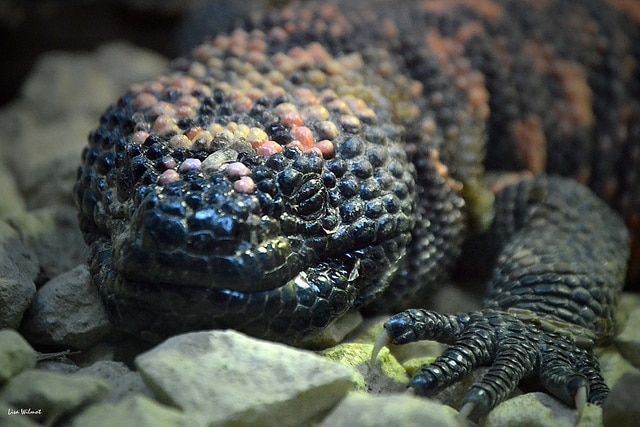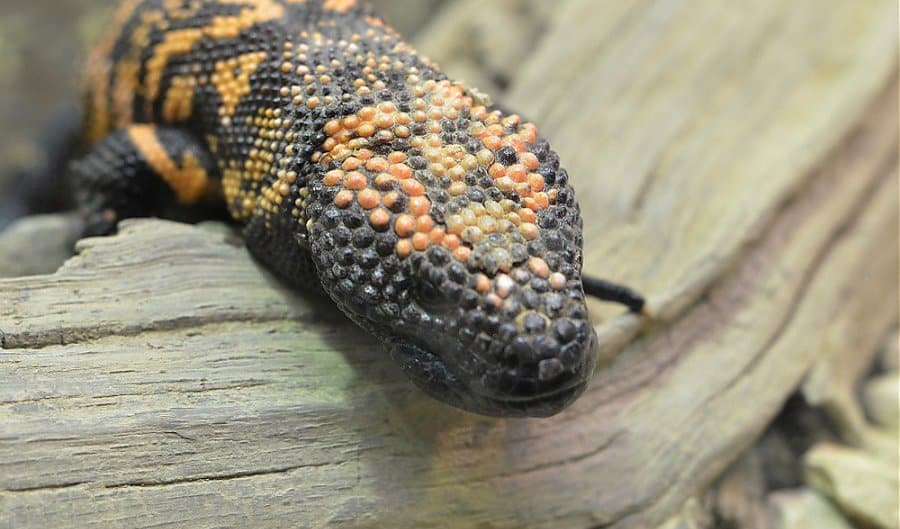Gila monster
Common Name: Gila monster
Scientific Name: Heloderma suspectum
Gila monsters are one of only two venomous lizard species in the world. The other species is the beaded lizard.
The gila monster’s prey are seldom found to have been poisoned by the lizards, which suggests that they usually use their venom for self-defence and not for catching prey.
Fast Facts
-
Status
Near Threatened
-
Size
38-58 cm long
-
Gestation
10 months
-
Young
1-12 eggs are laid
-
Life span
Up to 20 years
In the wild
Gila monsters eat a variety of foods, including small mammals, birds, lizards and the eggs of bird, lizards, snakes, turtles and tortoises. Gila monsters are able to devour enormous amounts of food at a time. The young can eat 50% of their body weight at one feed, and adults can consume 35%. This is important in case they are unable to find food regularly.
Gila monsters are found in the south-western United States and in north-western Mexico. They occur in a range of habitats, including desert grassland, desert scrub, thorn scrub, lower mountain slopes, canyon bottoms, rocky slopes and sometimes in oak or pine-oak woodland. These lizards seek shelter in spaces under rocks, in dense shrubs, burrows, or woodrat nests. They also spend much of their time in underground shelters in burrows or crevices, hibernating in winter and sheltering from the heat of the sun in summer.
Female gila monsters lay their eggs underground, normally in July or August. The incubation period is an average of ten months. Gila monsters are the only lizard in North America where the eggs incubate over the winter and the young hatch out the following year, from April to June.
Gila monsters face threats from being captured for the pet trade as well as from habitat loss due to urbanisation and agricultural development. These lizards are protected throughout their range and as such it is illegal to capture them. Large areas of their habitat are protected, and they are included in CITES Appendix II, which means that trade in these animals or their body parts is controlled.

